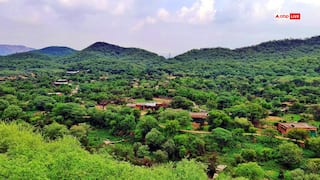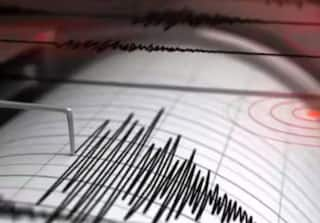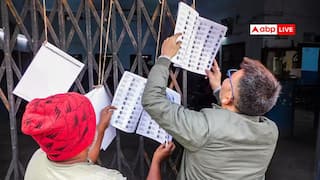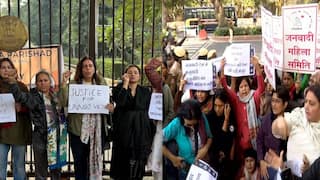Explorer
Garden where ban blooms

New Delhi: Union information and broadcasting minister Venkaiah Naidu defended the one-day ban on a Hindi news channel by asking: "Isn't showing anti-terror ops live in broad daylight a more serious threat to country?" The minister appeared to be referring to a six-minute telecast on NDTV India, the channel ordered to go off the air on November 9 as punishment for allegedly compromising national security through its telecast of the Pathankot anti-terror operation on January 4. But sources in the channel said the footage was not telecast "live" - the key condition to be met before any penal action can be initiated - but contained scenes recorded earlier from outside the Pathankot airbase.
Terrorists and Indian security personnel were killed during the anti-terror operations at the airbase, which started on January 2. The operations had entered the "mopping-up phase" during the telecast, which happened between 12.25pm and 12.31pm on January 4.
The six-minute footage showed vehicles moving in and out and along the perimeter of the airbase. A journalist from the channel, Rajeev Ranjan, who was reporting from Delhi and not Pathankot, was seen on one half of the screen while footage from outside the airbase occupied the rest of the screen. The reporter could be heard saying the technical area of the airbase had MiG-21 aircraft, helicopters and a fuel tank - elementary information about most airbases. While security personnel were combing the airbase for any hidden terrorists, Ranjan, expressing concerns purportedly articulated by army personnel, said in Hindi: "We can only guess the kind of destruction that could then take place." It is apparently on the basis of this six-minute clip that the I&B ministry said in its directive to the channel that it "revealed information on the ammunition stockpiled in the airbase, MiGs, fighter planes, rocket launchers, mortars, helicopters, fuel tanks among others, which was likely to be used by the terrorists or their handlers to cause massive harm, not only to national security (and the) international standing of the country, but also life of civilians and defence personnel". An executive with NDTV India said the reporter had merely shared information provided by army personnel earlier that morning. "Almost all the information shared by the reporter had been given out by an army spokesperson at an earlier press briefing that had been shown by almost all broadcasters. The reporter did not say anything that other channels were not putting out, or which was not in the public domain already," the executive said. "The footage that was shown during the commentary by the reporter had been pre-recorded and was not live," the executive added. A source said that at no point had any request been made not to make the information public, nor was it said that it would have any bearing on the operation - a common occurrence when information is leaked or shared inadvertently. It's not uncommon for media outlets to hold on to sensitive information. Whether the controversial footage was live or not assumes significance since the government has decided to split legal hairs. Rule 6(1)(p) of the Programme Code of the Cable TV Network Rules, under which the ban has been imposed on the channel, states: "No programme should be carried in the cable service which contains live coverage of any anti-terrorist operation by security forces, wherein media coverage shall be restricted to periodic briefing by an officer designated by the appropriate government, till such operation concludes." The rule on "live coverage" of anti-terror operations came into force only in April last year, which armed the government with powers to harass television channels. The ban order on NDTV India has drawn particular attention because it covers field reporting, indispensable to journalism, and because the channel had since then taken positions that did not match those of the government. Naidu today insisted that this was not the first time such a ban had been being imposed, and named a fashion channel and a movie channel as examples. A news channel that he also named had been taken off the air for showing an incorrect map. Against the backdrop of a blizzard of condemnation from associations representing the media, minister Naidu fell back on a government led by the Congress - the party that had imposed the Emergency - to justify the ban. "The decision on NDTV India (is) only a logical conclusion of concerns voiced by the UPA government over live coverage of anti-terror operations since 26/11 Mumbai terror attack," Naidu said in a statement. "(The) UPA issued several advisories calling for restraint. UPA government even said violation of coverage norms amounts to coverage against national interest." The live coverage of the 26/11 security operation had drawn flak following suggestions that it had enabled the terrorists' minders to pass on information about the commando movements and direct the retaliatory fire that prolonged the operation. But the UPA government had not banned any channel for the indiscretion, which appeared to have been committed more out of unfamiliarity with such an unfolding situation rather than any deliberate attempt to exploit the situation for commercial gains. Till now, the orders to go off the air had been confined to complaints about obscenity and the dissemination of misinformation, not "live coverage". A senior editor with NDTV India today said the broadcaster was set to move the Supreme Court against the ban order on Monday. Follow Breaking News on ABP Live for more latest stories and trending topics. Watch breaking news and top headlines online on ABP News LIVE TV
Read more






































